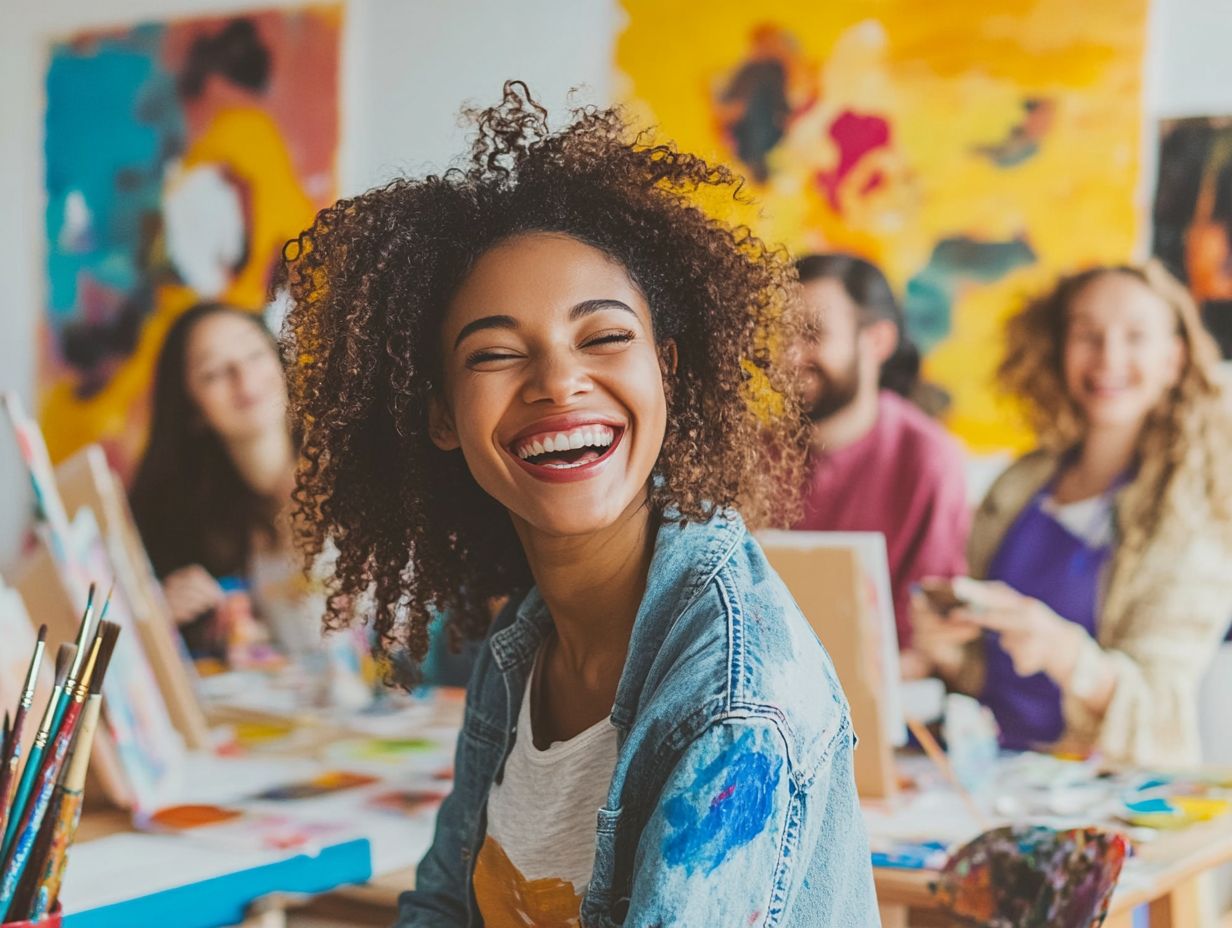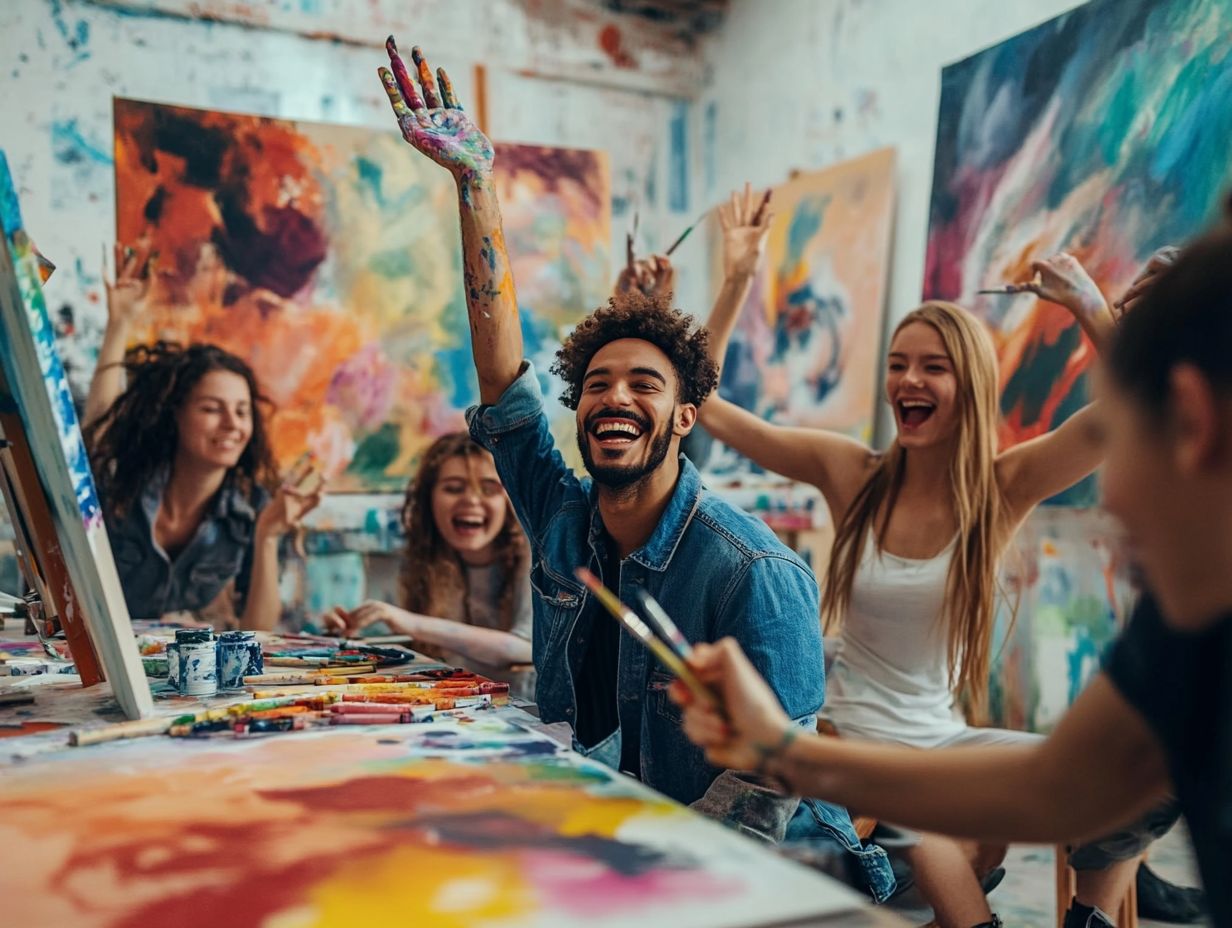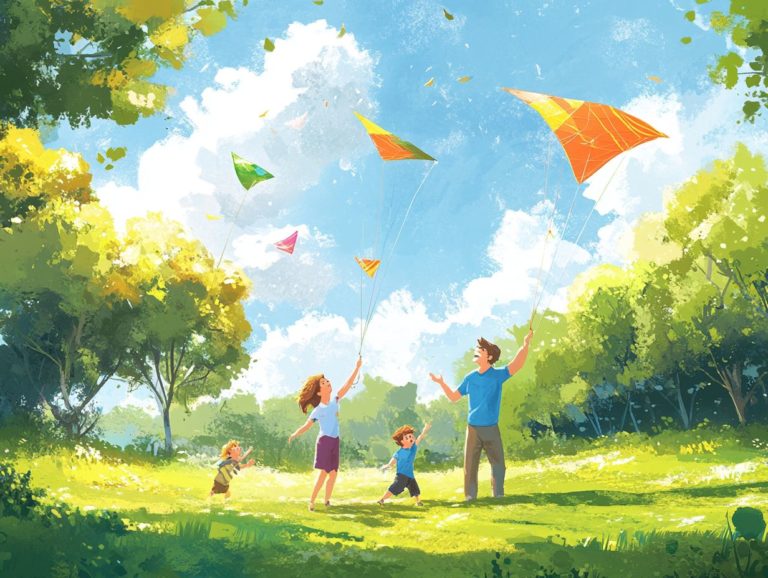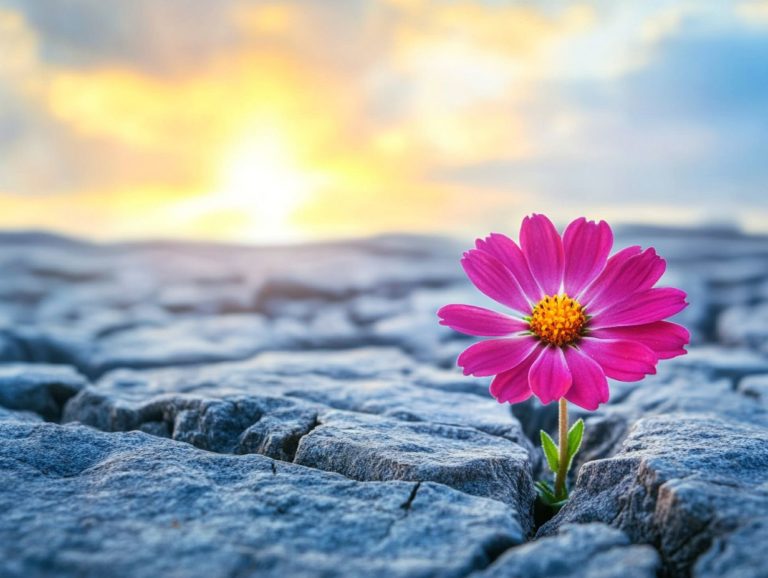How Art Can Foster Resilience
Art has always been a profound medium for conveying emotions and experiences. Its influence extends far beyond mere creativity.
This article delves into the intricate connection between art and resilience, demonstrating how engaging in artistic pursuits can empower you to navigate life’s challenges.
Art fosters self-expression and strengthens community bonds. It also enhances your problem-solving abilities, serving as an essential tool for cultivating resilience.
Explore practical ways to weave art into your daily life and uncover resources that can bolster your journey toward greater emotional strength.
Contents
- Key Takeaways:
- The Connection Between Art and Resilience
- Ways Art Can Foster Resilience
- Transform Your Daily Life with Art!
- Resources for Using Art to Foster Resilience
- Frequently Asked Questions
- What is resilience and how can art help foster it?
- In what ways can engaging in art improve one’s resilience?
- Can anyone benefit from using art as a tool for resilience?
- How does creating art help individuals cope with difficult situations?
- In what ways can art be used in a therapeutic setting to foster resilience?
- Can simply appreciating art have a positive impact on resilience?
Key Takeaways:

- Art empowers you to express yourself and unleash your creativity, which can help you build resilience and cope with difficult emotions.
- Creating art involves problem-solving and adaptability, skills that can be applied to real-life challenges and enhance resilience.
- Incorporating art into daily life fosters a sense of community and connection, providing support that strengthens resilience.
The Connection Between Art and Resilience
The connection between art and resilience unfolds in many ways, showcasing how creative expression can function as a profound emotional bridge during psychological crises.
Art therapy is a way to use art to help heal emotional wounds. It emerges as a beacon for those grappling with mental health challenges, helping you become more resilient while also benefiting healthcare professionals who weave these practices into their patient care.
This enduring relationship underscores the healing potential of artistic workshops and community engagement, inviting you to delve into your emotional landscapes and cultivate coping skills throughout your healing journey.
Defining Resilience and its Importance
Resilience, the remarkable ability to bounce back from life’s difficulties, plays a pivotal role in your mental health and well-being. It embodies the strength and flexibility you need when faced with challenges, allowing you to navigate stressors with grace while promoting a positive outlook.
This multifaceted quality includes essential components like emotional regulation, social support, and adaptability. By nurturing resilience, you not only manage adversity more effectively but also develop coping skills that foster personal growth.
Your journey toward resilience is often enriched through community involvement, where shared experiences and collective strength can solidify your mental state. Engaging in positive relationships and seeking support can significantly boost your ability to recover from setbacks, underscoring the crucial role of resilience as a foundation for a fulfilling and balanced life.
The Role of Art in Building Resilience
Art plays a transformative role in building resilience, serving as a powerful medium for creative expression that facilitates emotional release and supports your healing journey.
Through art therapy, you are enabled to explore your emotions and develop resilience strategies. You can also engage in trauma-informed practices, which are strategies that consider your past experiences to help you heal.
By providing a safe outlet for your thoughts and feelings, expressive arts can help you confront challenging experiences and emotions, ultimately fostering a greater sense of control and understanding. Therapeutic techniques like guided imagery, creating collages, or engaging in music and movement therapy can spark self-reflection, allowing you to visualize your path toward recovery.
These processes aid in emotional processing and strengthen your coping mechanisms, enabling you to navigate life’s challenges with increased confidence. Collaborative art projects can cultivate a sense of community, reminding you that you re not alone in your struggles, further enhancing your resilience along the way.
Ways Art Can Foster Resilience

Art nurtures resilience in many ways, allowing you to tap into creative outlets that enhance emotional support, encourage personal reflection, and cultivate resilience in your community.
Through art therapy, you have the opportunity to participate in group discussions, delve into personal meaning through self-portraits, and cultivate coping skills that enable you to navigate life’s challenges with increased grace and confidence.
Self-Expression and Emotional Release
Self-expression through art offers you a vital outlet for emotional release, acting as a helpful method that can facilitate healing during psychological crises. By engaging in art therapy, you can articulate feelings that might be difficult to express verbally, tapping into the profound healing power of creativity.
Art therapy invites you to explore and face your emotions in a safe and supportive environment, paving the way for transformative experiences. The act of creating art can alleviate feelings of isolation, fostering a sense of connection not only with yourself but also with others.
As you craft visual representations of your internal struggles, you can process complex emotions, often leading to significant breakthroughs.
In moments of sorrow or anxiety, this creative outlet provides clarity and relief, showcasing how art serves not merely as a means of expression, but as a pathway toward personal understanding and emotional resilience.
Creative Problem Solving and Adaptability
Engaging in creative expression cultivates your problem-solving skills and adaptability, which are essential elements of training to help you bounce back from difficult situations. Through art, you learn to approach challenges with an open mind, enhancing your mental wellness as you navigate the complexities of life.
Consider how painting or sculpting allows you to visualize obstacles, transforming abstract issues into tangible forms that you can manipulate and reframe. This process nurtures creative thinking and develops your emotional intelligence, enabling you to respond intuitively to various situations.
Workshops that blend art therapy with resilience training have yielded promising results, where participants not only develop effective coping strategies but also strengthen their community ties. By sharing personal stories through creative outlets, you inspire others, reinforcing a vital network of support during challenging times.
Ultimately, this fusion of creativity fosters a mindset that thrives on adaptability, proving beneficial across various life scenarios.
Building a Sense of Community and Connection
Building a sense of community and connection through art therapy is crucial for fostering resilience. It encourages you to engage in meaningful interpersonal relationships and seek emotional support among fellow participants. In group discussions and collaborative art-making activities, you ll find an intimate connection that enhances your overall healing process.
This supportive environment allows you to express your thoughts and feelings while witnessing shared experiences, significantly alleviating feelings of isolation. As you engage with others through creative expression, you ll build trust and develop empathy, leading to deeper emotional connections. These interactions are essential for establishing a robust support system where you and everyone else feel valued and understood.
Discussing your artistic journeys opens the door to diverse perspectives, inspiring personal growth and communal healing. This ultimately strengthens your resilience as you navigate life s challenges.
Transform Your Daily Life with Art!

Incorporating art into your daily life can profoundly enhance your mental wellness, offering you creative avenues that cultivate resilience and emotional well-being.
Engaging in simple activities, like immersing yourself in nature or capturing its beauty through photography, can become powerful instruments for self-reflection and stress reduction.
Act now to incorporate art into your life and feel the difference!
Start your artistic journey today and unlock emotional resilience!
Practical Tips and Ideas
Incorporating art into your daily life can be a life-changing experience. Consider exploring various creative outlets that provide emotional support and help you get involved with your neighbors. Simple activities like painting or journaling can create meaningful moments of self-expression that enrich your day-to-day existence.
Join a community art group to share your unique perspective while collaborating on exciting projects with others. You might also consider organizing neighborhood mural-making days. This not only beautifies your surroundings but also strengthens social bonds among participants, creating a sense of unity.
Using art therapy techniques can make these initiatives even better. Art therapy uses creative activities to help people express their feelings and improve mental health. Guided drawing sessions focusing on expressing emotions can help you process challenges in a supportive environment.
Ultimately, these endeavors do more than just promote individual creativity; they nurture a sense of belonging and emotional resilience within the community.
Resources for Using Art to Foster Resilience
Discover amazing books, workshops, and online communities that can help you use art for resilience. Dive in now! You ll find a wealth of resources at your fingertips to harness the power of art in fostering resilience. Workshops, insightful books, and vibrant online communities await, catering to diverse interests and skill levels.
These invaluable resources serve both healthcare professionals and individuals, offering pathways to enhance mental wellness through the transformative benefits of art therapy.
Books, Workshops, and Online Communities
Books, workshops, and online communities are invaluable resources for you as you seek to weave art therapy into your life, enriching your mental wellness journey. These platforms offer profound insights, practical tools, and unwavering support for both art therapists and individuals like yourself who harness creative expression as a means of resilience.
Consider titles such as “The Art Therapy Sourcebook,” which provide practical guidance and compelling case studies that deepen your understanding of the therapeutic effects of art. Workshops focus on experiential learning, allowing you to delve into your emotions through diverse mediums like painting, drawing, and sculpture.
Online communities, especially those on social media, create vibrant connections among practitioners and novices, forming safe spaces for sharing experiences and exchanging tips. These resources not only enhance your creative skills but also foster self-discovery, enabling you to develop coping strategies and emotional resilience during challenging times.
Frequently Asked Questions

-
What is resilience and how can art help foster it?
Resilience is the ability to bounce back and adapt in the face of adversity. Art can help foster resilience by providing a creative outlet for emotions, promoting self-expression, and building a sense of community and support, as explored in the art of resilience in storytelling.
-
In what ways can engaging in art improve one’s resilience?
Engaging in art can improve resilience by helping individuals identify and process their emotions, promoting problem-solving skills, and building a sense of self-confidence and self-worth.
-
Can anyone benefit from using art as a tool for resilience?
Yes, anyone can benefit from using art as a tool for resilience. Art is a universal form of expression and can be beneficial for people of all ages and backgrounds.
-
How does creating art help individuals cope with difficult situations?
Creating art can help individuals cope with difficult situations by allowing them to focus on something positive and productive, providing a sense of control and accomplishment, and serving as a healthy outlet for emotions.
-
In what ways can art be used in a therapeutic setting to foster resilience?
Art can be used in a therapeutic setting to foster resilience through various forms of art therapy, such as painting, drawing, and sculpting. These activities can help individuals explore and process their emotions in a safe and supportive environment.
-
Can simply appreciating art have a positive impact on resilience?
Yes, appreciating art can have a positive impact on resilience by providing inspiration, promoting reflection and self-awareness, and fostering a sense of connection and understanding with others.






